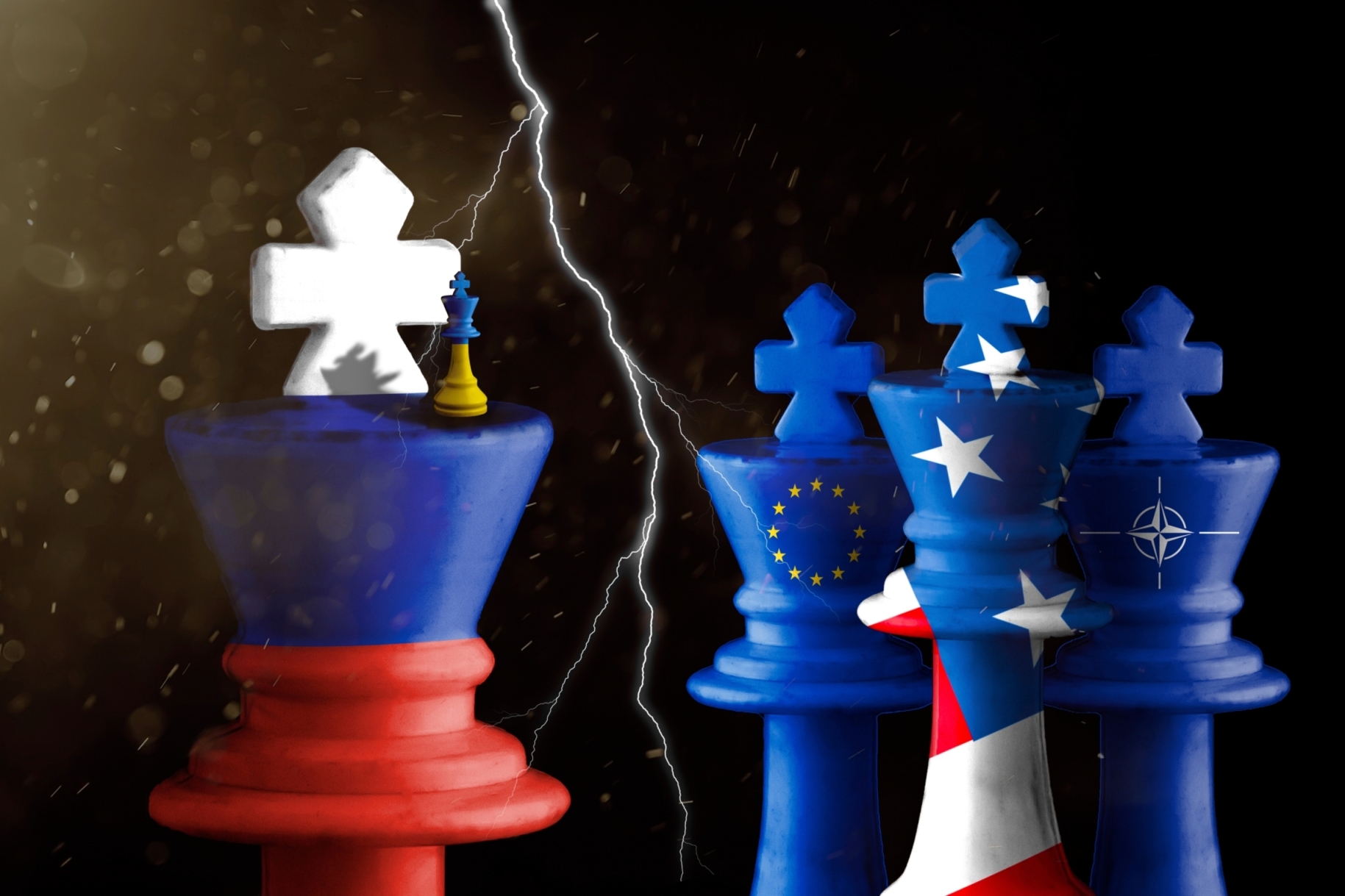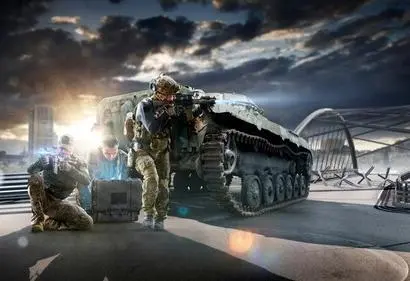Abstract: The Ukraine crisis, which continues to leave its mark on the world agenda, has transformed into another dimension with Russia’s invasion. It is striking that Russia has continued to use the “brinkmanship diplomacy” dating back to the USSR era to fulfill its demands from NATO regarding the Ukraine war. It was expected that NATO will make concessions by increasing the magnitude of danger and threat through brinkmanship diplomacy. Already with the threat of an invasion of Ukraine, Russia theoretically fulfilled its request that Ukraine does not join NATO through brinkmanship diplomacy. Notably, Russia applied the same approach when posing a threat by making its missiles ready in Cuba when it demanded the US to remove its missiles deployed in Turkey during the 1962 Cuban Missile Crisis. The similarity lies in the fact that the US escalated tension in response to the threat posed by Russia in the Cuban Missile Crisis and presently that it increased tension by insisting that Ukraine joins NATO in response to Russia’s demands. As such, similar links can be established between the Ukraine Crisis and the Cuban Missile Crisis within the framework of brinkmanship diplomacy.
Bottom-line-up-front: Brinkmanship diplomacy is an approach often turned to by powerful countries. Such behavior has mainly been used by the US and Russia. The method, which was first used in 1962, is once again being applied in the conflict between the US and Russia at the dawn of the current Ukraine crisis.
Problem statement: How did Russia’s frequently used brinkmanship diplomacy affect the Cuban Missile Crisis, and how can the dawn of the Ukraine crisis be evaluated in that sense?
So what?: Under brinkmanship diplomacy, which was used by the Soviet Union to get the US’s missiles deployed in Turkey removed during the Cuban Missile Crisis, the two superpowers mutually increased the threat of danger and brought the world to the brink of a nuclear war. The same approach has been used by Russia in the beginning of the Ukraine crisis.

Source: shutterstock.com/sameer madhukar chogale
The Ukraine war is a growing concern on the world agenda. Before invading Ukraine, various Russian demands from NATO have come to the forefront. It should be noted that Ukraine became a NATO Enhanced Opportunity Partner in 2020 and seeks to start NATO membership negotiations as soon as possible to ensure its territorial integrity and eliminate the Russian threat. On the other side of the coin, Russia does not want its neighboring countries, especially those formerly affiliated with the Soviet Union, to become NATO member states. At the least, Ukraine’s entry into NATO posed a threat to Russia that is comparable to the missiles the US deployed in Turkey to intimidate Russia during the Cuban Missile Crisis. Russia wants NATO to commit not to expanding towards the east in Europe. Broadly, this points to Russia’s attempt to re-establish the “Brinkmanship Diplomacy” which was used in the USSR years.
Brinkmanship Diplomacy
Thomas C. Schelling first used the term Brinkmanship Diplomacy, now in application by Russia, in his book ‘’The Strategy of Conflict’’. Its use in the sphere of international relations was started by the Secretary of State of the Eisenhower administration, John Foster Dulles. It is defined as the ability of an aggressor to undertake an observable action that will, with a positive probability, lead to war or some other mutually undesirable outcome. Brinkmanship can be seen as a probabilistic threat.[1] The approach itself works by constantly threatening the opposing party, making them do what they want and making them adhere to strict requirements. Acting with brinkmanship can be perfect for the sub-game, as observable probabilistic threats have an underlying intention – that implementing them will encourage the victim to make concessions.[2] Undoubtedly, threats have to be credible for tensions to escalate, whereas bluffs may have to be realized to bolster their credibility. It involves many risks because of the possibility of danger or war. The idea that the next step could lead to disaster is presented to the other side and the entire world by a nation that actively engages in Brinkmanship diplomacy. Indeed such an idea could catapult into truly disastrous outcomes for all.
The approach itself works by constantly threatening the opposing party, making them do what they want and making them adhere to strict requirements. Acting with brinkmanship can be perfect for the sub-game, as observable probabilistic threats have an underlying intention – that implementing them will encourage the victim to make concessions.
The 1962 Cuban Missile Crisis and Brinkmanship Diplomacy
The first familiarity that comes to mind with the application of this approach is, of course, the Cuban Missile Crisis. It occurred due to the reciprocal deployment of nuclear-capable ballistic missiles, specifically, the Soviet missiles being deployed into Cuba, an island geographically close to the US. Prior to that, the US’s missiles had been deployed in Italy and Turkey. The Soviet’s perceived threat was around concerns that the US missiles placed in Turkey, which is geographically close to the Soviet Union, would be used against them. Because of said threat perception, the Soviets then threatened the US by placing their missiles in Cuba, which is geographically close to the US, in order to eliminate the US threat missiles in Turkey.[3] This should highlight that the USSR boldly implemented “Brinkmanship Diplomacy” in the Cuban Missile Crisis in 1962. On the other side of the dispute, the US continued in line by not making concessions to the Soviets and carried out the brinkmanship action, observing how the Soviets would react when they saw the Cuban blockade and the US ships entering Cuba.[4] The daring use of brinkmanship, which asks both sides to make concessions to achieve their goals, brought the world to the brink of nuclear war by multiplying threats and danger to the highest level.
It occurred due to the reciprocal deployment of nuclear-capable ballistic missiles, specifically, the Soviet missiles being deployed into Cuba, an island geographically close to the US.
The Beginning of the Ukraine Crisis
A similar situation arose in the 2021/2022 Ukraine crisis. NATO membership talks between Ukraine and Georgia put Russia on the defensive. Ukraine and Georgia are former countries of the disintegrated Soviet Union. They are geographically located near Russia. The inclusion negotiations of Ukraine and Georgia in the NATO alliance created against the Russia threat, made Russia feel in danger. For this reason, Russia opposes the entry of Ukraine, Georgia and other surrounding and former Soviet countries into NATO. Russia demanded that NATO end the Ukraine Crisis by ceasing its eastward expansion, not granting Ukraine membership and withdrawing its forces from Eastern European countries that joined the alliance after 1997.[5] Otherwise, Russia’s demands were not met, tensions escalated through rare diplomacy and armed conflict broke out in Ukraine. Another perceived threat to Russia is the missile launch systems of the US that are currently deployed in Romania. These missile systems threaten Russia because they are an attack system, not a defense system. One of Russia’s main objectives is to neutralize the base in Romania.[6]
From the outside looking in, it appears that Russia sought to intimidate the US through Ukraine. In fact, Russia’s approach was not about occupying Ukraine, at least not primarily. Rather, its desire seemed to be focused on achieving political goals by creating a military threat perception around Ukraine, using brinkmanship diplomacy. In the bigger picture, this expressed the tension between Russia and the US, alluding to the fact that Ukraine was a pawn, just as Cuba was in the Cuban Missile Crisis. Seemingly, Russia used the chaos it has created in Ukraine as an opportunity to keep its close environment safe and undermine the unity of the US, NATO, EU and create various divisions.
In fact, Russia’s approach was not about occupying Ukraine, at least not primarily. Rather, its desire seemed to be focused on achieving political goals by creating a military threat perception around Ukraine, using brinkmanship diplomacy.
Russia aims to radically change the European security structure formed after the collapse of the USSR. With the threat of exiting the nuclear disarmament agreement and its policy of rapprochement with China, Russia can do so. Said changes would propel structural and systemic changes in the international system. President Putin is attempting to turn his country into the recognized global power center it once was.[7] On the other hand, the US aimed to avenge the loss of political credibility that it suffered in Georgia in 2008 and after the annexation of Crimea by Russia in 2014. At the same time, it wanted to target Russia and present it as a misaligned actor to broaden the gap between Russia and the Chinese alliance, distance Russia from China, and reduce its regional and global influence. Vladimir Putin made the ultimate step in this direction himself by invading Ukraine.
The US could have potentially maintained the tension with two options against Russia’s brinkmanship. One of them was to deploy its military presence in the region, strengthen it, and then take steps to deter Russia. Strictly speaking, this reminds us of the deterrent US case, whose military presence strengthened the region against the USSR, which implemented brinkmanship in the Cuban Missile Crisis.[8] Although times do change, tactics may remain the same due to countries maintaining the same state of mind as before. The second was to ensure the realization of strong European solidarity against Russia. Obviously, that was not a very realistic scenario because the European Union was also divided. As a result, Russia kept the war card on the table, waiting for the US to make concessions. Ultimately, Vladimir Putin decided to invade. Was there a way for a non-military solution? It should be added that according to Schelling, the best deterrence is not just a threat based on military force but the existence of effective means of retaliation and the ability to show it to the other side.
Although times do change, tactics may remain the same due to countries maintaining the same state of mind as before.
Ayşe Selcan Akın is an undergraduate student of International Relations at the Hacettepe University, Turkey. At another university, Anadolu, she attends the department of Local Government. She is interested in foreign policy, diplomacy and security studies. The views contained in this article are the author’s alone and represent neither the stance of the Hacettepe University nor Anadolu University.
[1] Thomas C. Schelling, “The Strategy of Conflict: Prospectus for a Reorientation of Game Theory,” Journal of Conflict Resolution, 1958.
[2] Michael Schwarz and Konstantin Sonin, “A Theory of Brinkmanship, Conflicts and Commitments,”Journal of Law, Economics & Organization (Oxford University Press, 2008), Vol. 24, No. 1.
[3] Mark J. White, “The Cuban Missile Crisis,” Palgrave Macmillan, 1996, 64.
[4] Robert B. Smith, “Presidential Decision-Making During the Cuban Missile Crisis,” Simulation & Games, Vol. 1, Issue. 2, 1970, 173.
[5] Ödül Muhtaroğlu, Kıbrıs Gazetesi, last accessed February 22, 2022, https://www.kibrisgazetesi.com/rusya-ukrayna-krizi-ve-yansimalari-makale,16002.html.
[6] Reşit Özmen, Yakın Doğu Enstitüsü, April 14, 2021, https://yde.neu.edu.tr: https://yde.neu.edu.tr/rusya-ukrayna-krizi-ve-nato-etkisi/.
[7] HasanCanpolat, “Rusya Kızgın Değil; Odaklanıyor, Ukrayna Krizini Putin Doktrini Üzerinden Anlamak,” TASAM, February 12, 2022, https://tasam.org/tr-TR/Icerik/69041/rusya_kizgin_degil_odaklaniyor_ukrayna_krizini_putin_doktrini_uzerinden_anlamak.
[8] Akdogan Özkan, “60 yıl sonra yeni bir ‘füze krizi’ mi?,” T24, December 13, 2021, https://t24.com.tr: https://t24.com.tr/yazarlar/akdogan-ozkan/60-yil-sonra-yeni-bir-fuze-krizi-mi,33444.






